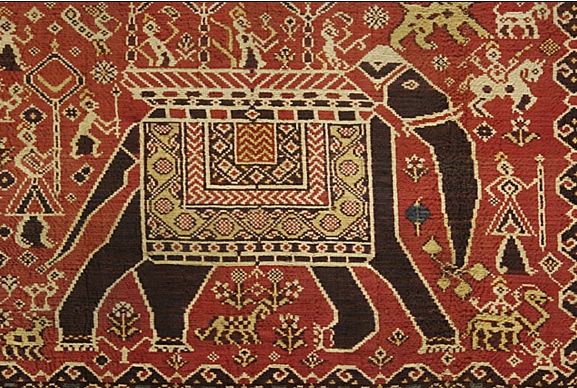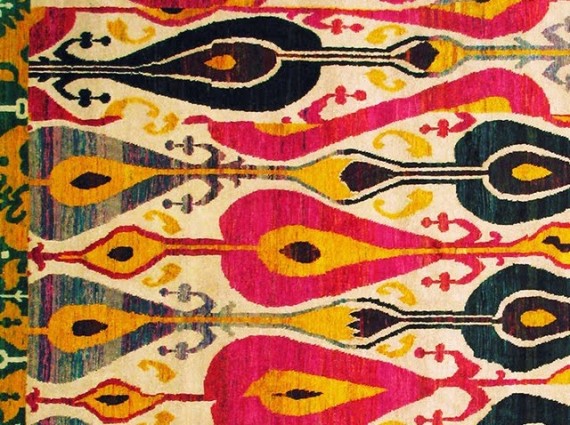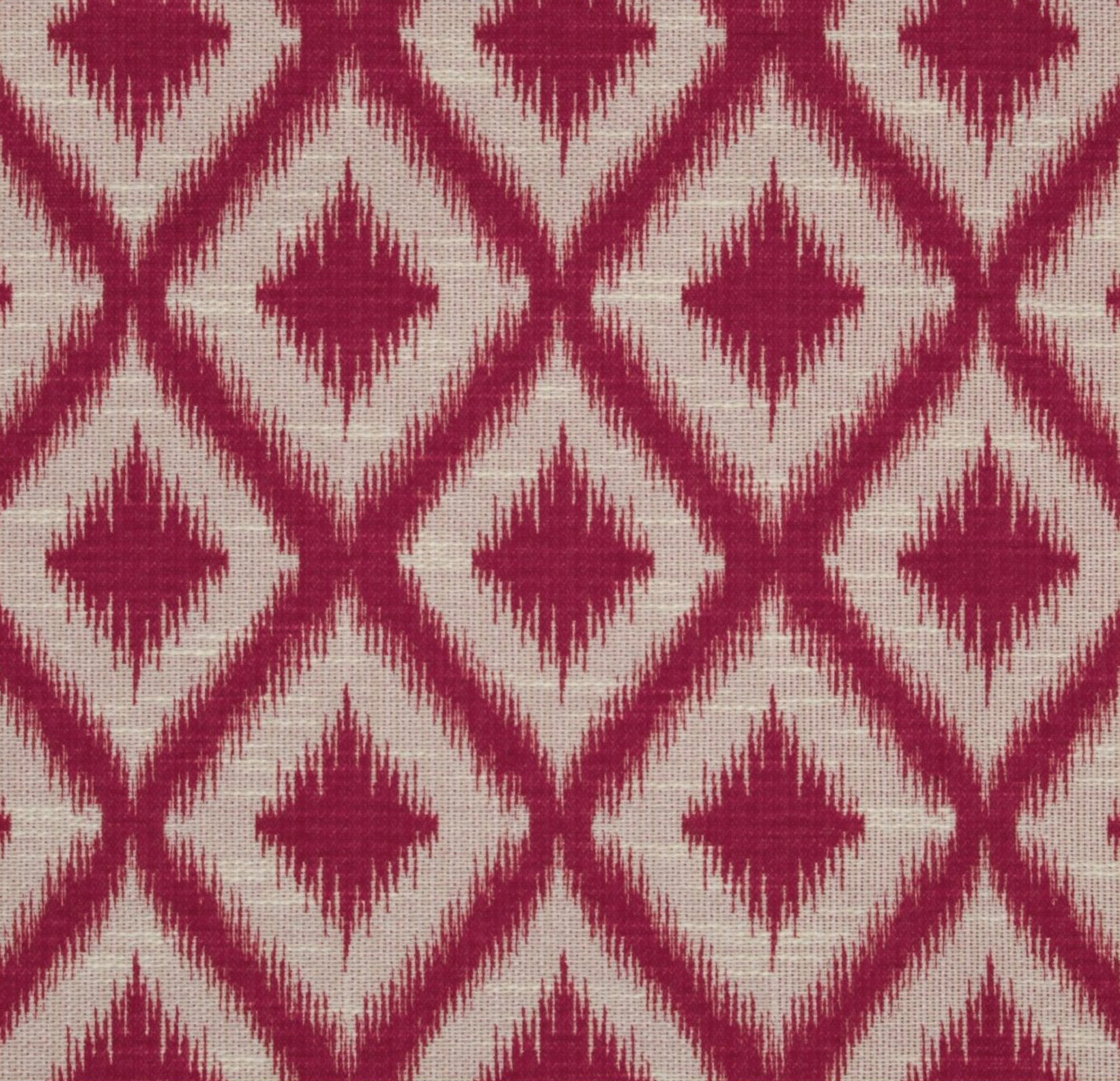Ikat is a dyeing technique similar to tie-dye on either the warp or weft fibres to create patterns.
"The word Ikat comes from a word in Malay that means to bind or wind around. Thousands of individual threads are tie-dyed in intricate patterns, then untied and woven into fabric; in 19th century Bukhara, there were hundreds of workshops dedicated solely to making Ikat threads. The threads were wrapped, dyed, sorted, rewrapped and dyed again; the tie-dye technique produced slightly innacurate color distribution which resulted in the enchanting blurred edges of the finished designs. The more elaborate the pattern, the longer the process before weaving could begin. Ikat designers then hung the threads on simple looms, marking them with patterns passed down through generations of artisans. Weavers charged according to the intricacy of the design. Hundreds of thousands of Ikats were woven in central Asia in the nineteenth century, and exported to countries all along the Silk Road. Antique Ikat robes and Ikat fragments are coveted by textile collectors and designers, and add a touch of the exotic to interiors both traditional and modern. The bright, vegetable-dyed colors and graphic patterns are bold" --From poshsurfside.com/ikat-fabrics-ancient-and-modern

Traditional robe.
The Double Ikat weave is regarded as the most complex form of ikat, where both the warp and weft threads are dyed before being woven, to create the most intricate patterns. The skill in ikat is not so much in the weaving as the dyeing. Depending on how many colors are required, an ikat cloth could require as many as 10 dyeing stages. --From habitusva.com/in-a-nutshell

Detail of a classic Gujarati patola from the early 19th century.

Central Asian ikat textile.
